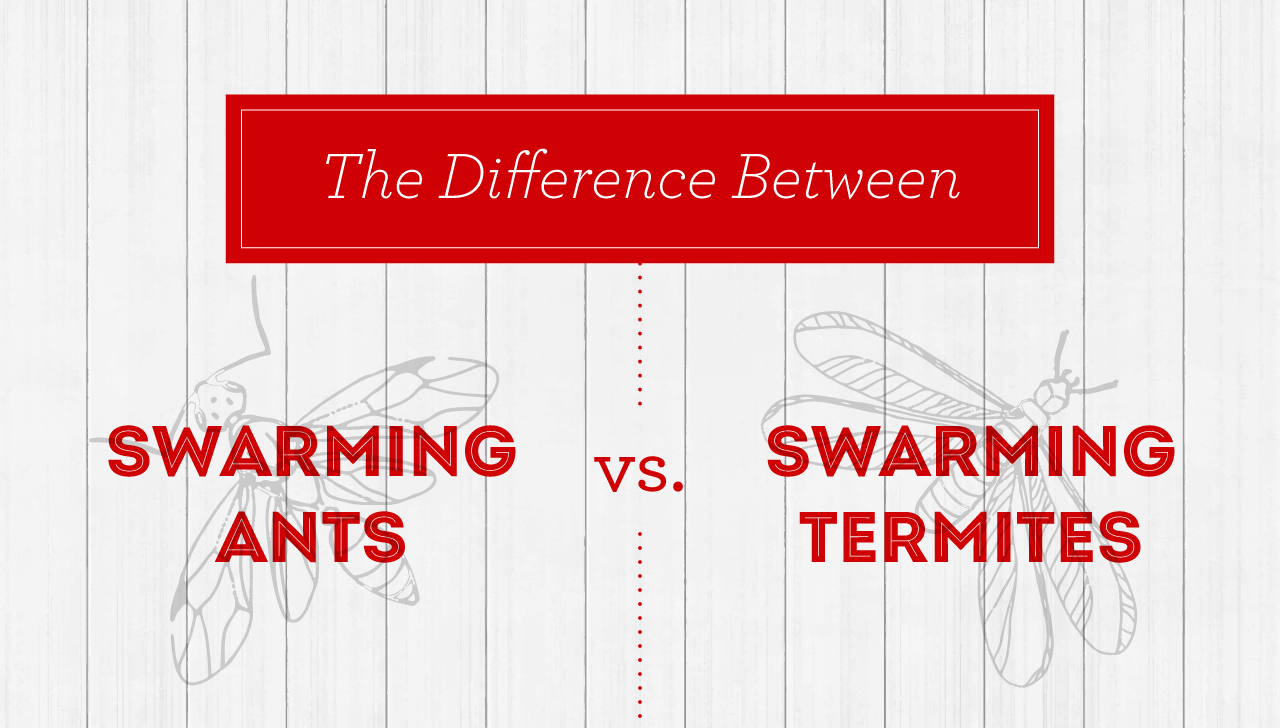Now that people living in Louisiana are at home more, you should be on the lookout for termites! With termite swarming season already underway, it’s more important than ever to be aware of these unwanted guests. Termites in their swarming phase can often cause confusion for homeowners experiencing this activity in or around their home. In this stage, termites are trying to mate and begin new colonies. The termite colony sizes can range from a few to thousands!
Many homeowners mistake termite swarming activity for swarming ants. Although these two pests may look alike, the treatment varies greatly. Not to mention, the damage they can cause! It’s crucial for you to know the difference between swarms of termites and winged ants in order to take the necessary prevention steps to protect your home. The Bug Man has created a guide for you to distinguish between swarming termites in swarming ants so you can seek the right treatment to eliminate them for good:
Termites
Something that a lot of our customers don’t know is that there are five different members of the termite family. The swarmers are just one of the five members. The other members of the colony include the Queen, King, Solider, Worker and Alate aka “swarmer”. The swarmer termites are the reproducers, measuring 4 mm long and are dark brown and/or black in color. Both termites and swarming ants have two pairs of wings that only appear when they’re swarming, however, they have differences. Termites have four wings of equal size and length that stack on top of each other when they are not flying. Their wings are easily broken, or shed after reproduction, often found around your home in the swarming phase.
The antennae of swarming termites are straight and beaded and have wide bodies with a broad waistline. Their main source of food is wood, paper, and other cellulose-based sources.
While termites and flying ants have similar reproductive cycles, mating and establishing new colonies in warmer months, their life cycles vary greatly. Male flying ants typically die after mating, and most worker ants live for only a few months, while both male and female termites live on long past reproduction, often able to survive several years.
Flying Ants
Flying ants are winged swarmers that can be seen nesting in damp or rotting wood, but may also be present in dry wood. Flying ants are omnivores that feed on seeds, nectar, and other insects and/or debris found in or around your home. The easiest way to distinguish a termite from an ant is to look at the body. Flying ants have pinched waistlines with three body parts: a head, abdomen, and thorax. They are black, brown, or reddish in color. The antennae of these pests are elbowed, unlike the termites.
Although termites and swarming ants are similar in having two pairs of wings, the ants have front wings that are noticeably larger than their hind wings. On termites, all four wings are the same size. Ants wings also are more resistant than termites and don’t break off as easily.
While flying ants live in large colonies similar to termites, and some (like carpenter ants) will even inhabit wood, they do not feed on wood, and therefore are much less likely to cause the structural damage that termites are known for.
Swarming termites are no joke and can destroy your home in the blink of an eye, costing you thousands. The Bug Man would be more than happy to explain to you more about these pests and what to do in the event of a termite swarm, and most importantly, how you should proceed with treatment.
If swarming insects invade your home or are you’ve noticed them in the soil around your property, contact The Bug Man today. You can also Request an in-home estimate today or call us for all your pest needs at (225) 923-2847.




